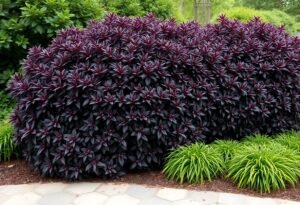Why Choose Japanese Miscanthus?
Japanese miscanthus is a versatile plant that looks magnificent in both home gardens and larger public spaces. Its numerous advantages include:
1. Weather Resilience: This grass is drought-resistant and can withstand frost, making it an excellent choice for those who may not have time for daily plant care.
2. Low Maintenance: Japanese miscanthus doesn’t require complicated upkeep. Regular watering and occasional trimming will keep it looking fabulous.
3. Versatile Usage: It can act as a hedge, a backdrop for other plants, or a standalone ornamental feature.
How to Plant Japanese Miscanthus?
Planting Japanese miscanthus is a simple, enjoyable task. Here are a few steps to guide you through the process:
1. Choose the Right Location: Japanese miscanthus thrives in sunny or lightly shaded areas with well-drained soil.
2. Prepare the Soil: Before planting, enrich the soil with compost or organic fertilizer.
3. Planting: Dig a hole about 12 inches deep, place the seedling in, and gently cover the roots with soil. Be sure the plant isn’t planted too deep.
Caring for Japanese Miscanthus
To ensure your Japanese miscanthus flourishes, adhere to these straightforward guidelines:
1. Watering: Young plants require consistent watering, especially during the first season after planting.
2. Fertilizing: In spring, apply fertilizer high in potassium and phosphorus to encourage growth and flowering.
3. Pruning: Early spring is the time to trim back old grass to about 8 inches, encouraging new shoots to emerge.
Aesthetic Properties of Japanese Miscanthus
Japanese miscanthus is not only structurally beautiful but also colorfully dynamic. Its leaves change throughout the seasons, showcasing various shades of green, while late summer and fall bring golden and copper hues. This plant is not just a decoration; it’s a living design element.
Best Uses for Japanese Miscanthus
Incorporate Japanese miscanthus into different areas of your garden:
1. As a Hedge: It can serve as a natural barrier, dividing different sections of your garden.
2. In Compositions with Other Plants: Combine it with perennials or shrubs for a harmonious and visually appealing arrangement.
3. In Containers: Japanese miscanthus looks wonderful in large pots that can be placed on patios or balconies.
Challenges in Growing Japanese Miscanthus
Although Japanese miscanthus is quite resilient, some issues may arise:
1. Fungal Diseases: Ensure it doesn’t grow in overly wet soil, which can lead to mold.
2. Gray Mold: This is a concern, especially during those humid spring days. If problems occur, it’s wise to use appropriate fungicides.
Conclusion
In conclusion, Japanese miscanthus is an extraordinary plant that will bring elegance and natural charm to your garden. Its versatility and low maintenance needs make it an ideal choice for every gardener. Don’t wait any longer – consider Japanese miscanthus and enjoy its beauty every day!
Disclaimer
The information in this article is for educational purposes only. It’s always good to consult a gardener or horticultural expert before making any decisions regarding plant cultivation.

















